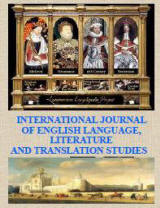Dwelling in Stillness:
Solitude, Melancholy, and the Shaping of the Poetic Self in
the Works of William Wordsworth, Samuel Taylor Coleridge,
and John Keats
Dr. Shagufta Anjum1, Dr.
Shehnoor Shan2
ABSTRACT
This paper explores how, in the
writings of William Wordsworth, Samuel Taylor Coleridge and John
Keats, melancholy and solitude serve as transforming experiences
that help to shape the poetic self rather than just being emotional
states. The study contends that these poets turn inward—toward
silence, nature, loss, and memory—not to escape the world, but to
better understand their place within it, against the backdrop of the
Romantic period's increasing introspection and disenchantment with
Enlightenment rationality. The paper traces a psychological and
philosophical trajectory through close readings of important poems
like “Tintern Abbey”, “Dejection: An Ode”, and “Ode on Melancholy”.
Wordsworth's meditative solitude, which cultivates identity through
communion with nature, and Coleridge's haunted introspections, which
grapple with fragmentation of the self to Keats's deeply sensual
melancholy, which embraces fleetingness as the foundation of
emotional and artistic profundity. In both situations, loneliness
and grief are generative rather than destructive, resulting in a
self that is self-reflective, open, and creatively awakened. This
study reexamines the role of melancholy and solitude in the Romantic
verse by fusing ideas from the Romantic age with insights from
modern Affect Theory, Psychoanalysis, and Ecocriticism. These ideas
are not viewed as pathology or escapism, but rather as prerequisites
for moral and imaginative understanding. It presents a novel
viewpoint on how Romantic poets express a self that is not steady or
victorious but rather evolving, constantly influenced by inner
experience and emotional nuance.
Key Words: Romantic Poetry, Early Romantics, Psychoanalysis,
Ecocriticism, Affect Theory.




